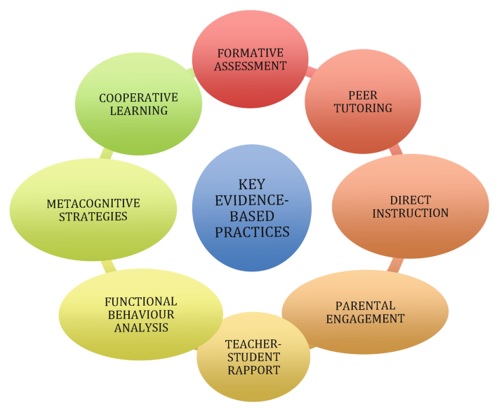Evidence-Based Instruction What It Is And 8 Instructional Strategies For The Classroom
10th June 2024
It is the goal of any educator to have their students understand the material being taught. But even if they did so for various reasons, educators and learners alike had to educate themselves. Using scientific findings about learning and evidence-based instructional approaches, successful educators continuously improve the way they teach. However, with so many teaching approaches out there, how do you know which one to choose? Here is how evidence-based strategies can come to your help.
What Is Evidence-Based Instruction?
Tried-and-true instructional strategies that work in every classroom include evidence-based education. A wealth of studies has been conducted on tactics that are effective in online, hybrid, and in-person learning contexts. It is the responsibility of teachers to make an effort to get to know each of their pupils. Effective teaching is distinguished by this kind of education, which also incorporates the notion that every student can achieve.
Instructors do more than just set high standards when it comes to incorporating learning outcomes. Student retention is positively impacted by active learning, an evidence-based teaching strategy. This entails making the most use of, involving, and engaging students in the educational process. To guarantee that students acquire the necessary skills for mastering and remembering the material, educators should concentrate on research-based techniques.
Do you follow us on Social Media? If not, then you’re missing out on a lot of informative content. We regularly share upgraded educational content, tips, feedback, and more. Check us out by clicking the profiles here - Facebook / Twitter / LinkedIn / Pinterest / Instagram / YouTube
8 Evidence-Based Strategies To Use In The Classroom

Source: link.springer.com
Here are a few tried and tested strategies that you can use in your classroom starting today:
1. Assess Prior Knowledge
You can determine what your students already know and what foundational pieces need to be added when you evaluate their past knowledge on a certain subject. Beginning at the appropriate content level will also help learners who are already familiar with the subject matter become less bored and inattentive, and it will also help students who feel left behind feel less stressed and anxious.
One of the first things you should do with students is assess their past knowledge since it helps you figure out where to go next. To teach them the topics you want them to know, the remainder of the session is focused on making connections to what they already know.
2. Set Clear Learning Goals
To ensure that everyone knows what they're working for, be clear about the goals you have for your students right away.
The purpose of your lesson will be unclear if you find it difficult to restate for your pupils what you want them to know and be able to do at the end of a given lesson. Setting clear goals for your lessons can help you and your students concentrate on the important things.
3. Show And Tell
No, this isn't an opportunity to flaunt your best feature by taking the front of the class. Another name for the show and tell is Share and Model. It entails explaining the idea or process first, followed by the presentation of visual proof.
The majority of students want to achieve and live up to your standards, but they aren't always aware of what is needed to do well in your course. Clarifying what is required to accomplish well in an assignment is aided by modeling and communicating what we expect from it. Depending on your subject, how you see modeling for your course may change.
4. Collaborative Learning
Productive group work, often known as peer-to-peer or collaborative learning, entails more than merely assigning group projects. When everyone in the group has a goal to do and the group works as a community of learners, working as a group is the most productive.
Through group collaboration, students may use their various abilities and perspectives to develop better learning materials or products than they could on their own. Group work projects and collaborative learning can be approached in a variety of ways.
5. Check For Understanding
The teacher can assess how well students are grasping the course material and identify any misunderstandings by using questions to check for knowledge, particularly before going on to the next section of the class. Early in a course, asking comprehension questions gives you the chance to address issues before they cause more misunderstandings or confusion.
You may take into account question kinds, question levels, and ways for incorporating questions into your overall classroom engagement when thinking about a method for the methodical and intentional use of questions in the classroom.
6. Teach Strategies Not Just Content
Only when your pupils can solve issues independently and don't give up easily when something gets too hard will they be able to become autonomous learners?
Teach your kids how to locate the solutions on their own, rather than merely providing the answers. Effective learners employ a variety of tactics, such as solving arithmetic equations, conducting research, and sounding out challenging texts.
7. Nurture Metacognition
Fundamentally, metacognition is the act of thinking about thinking. The most successful learners not only employ learning tactics, but they also pause to consider the reasons behind and mechanisms of those strategies. It involves asking your pupils to identify the processes they use to solve problems, the background information they bring to the table, and to adjust their strategy as needed. The wrapper is one method that is frequently employed.
A wrapper is a set of questions given to students after the conclusion of a project, test, or assignment to get them to reflect on how they approached the situation and what they could have done differently to better achieve the intended result. Pre- and post-assessments, together with reflection exercises, are examples of further metacognitive techniques.
8. Offer Feedback
Your students must be aware of their performance to progress and grow in their learning. Long before you give your students their final project mark, you should let them know this information so they have time to make corrections and refine their work. Offering feedback in the form of a sandwich made of compliments, corrections, and more compliments is my preferred method.
In this case, openness is crucial regardless of how you go about putting it into practice. Adding peer review is an additional choice. According to Oxford's Center for Teaching and Learning, peer feedback exposes students to many approaches to a problem and helps them to better evaluate themselves.
Still In Two Minds?
Research-proven teaching methods provide statistically significant improvements in student learning and performance. Not only are evidence-based teaching methods mandated by science, but they are also undeniably successful. If you are still in a dilemma of whether or not you should use them in your classroom, try pursuing an International Teaching Diploma Course in Kolkata to understand the best possible strategies.
We believe education should be accessible for everyone. That’s why we don’t charge for our blogs. Find the right course that will help you in your career with us, contact us at - 1800–212–6400. You can mail us at act@asiancollegeofteachers.com.
Written By : Sanjana
Leave a Reply

